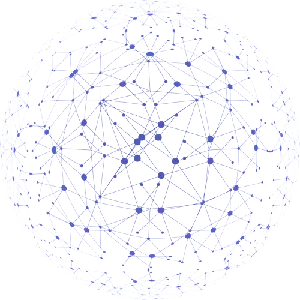Wireless Sensor Networks
Undergraduate course, University of Giresun, Department of Computer Engineering, 2019
 This course provides an introduction to the fundamental concepts, technologies, and design principles of wireless sensor networks. Students will learn about the different types of sensors and communication technologies used in WSNs, as well as the various challenges that need to be addressed in the design and implementation of these networks. Topics such as medium access control, routing protocols, data management, power management, security, and applications of WSNs will be discussed in depth. By the end of the course, students will have a solid understanding of the key concepts and technologies involved in wireless sensor networks, as well as hands-on experience with programming and simulation tools.
This course provides an introduction to the fundamental concepts, technologies, and design principles of wireless sensor networks. Students will learn about the different types of sensors and communication technologies used in WSNs, as well as the various challenges that need to be addressed in the design and implementation of these networks. Topics such as medium access control, routing protocols, data management, power management, security, and applications of WSNs will be discussed in depth. By the end of the course, students will have a solid understanding of the key concepts and technologies involved in wireless sensor networks, as well as hands-on experience with programming and simulation tools.
Chapter 1: Introduction to Wireless Sensor Networks
- The Evolution of Sensor Networks and their Importance in Modern Applications
- Key Concepts and Terminology in Wireless Sensor Networks
- Understanding the Unique Characteristics and Challenges of Wireless Sensor Networks
Chapter 2: Wireless Sensor Network Architectures
- Overview of Different Architectures: Hierarchical, Flat, and Cluster-based
- Evaluating the Pros and Cons of Various Wireless Sensor Network Architectures
- Design Considerations and Trade-offs in Architectural Choices
Chapter 3: Sensor Nodes and Hardware Components
- Introduction to Sensor Nodes: Components, Sensors, and Power Sources
- Exploring the Various Types of Sensors and Their Applications
- Evaluating Hardware Options for Sensor Nodes: Performance, Cost, and Power Efficiency
Chapter 4: Communication Protocols in Wireless Sensor Networks
- Introduction to Communication Protocols: MAC, Routing, and Transport Layers
- Evaluating Popular Protocols: Zigbee, Bluetooth, Wi-Fi, and LoRaWAN
- Designing Efficient and Reliable Communication Protocols for Sensor Networks
Chapter 5: Energy Management and Power Efficiency
- Understanding Energy Constraints in Wireless Sensor Networks
- Energy Harvesting Techniques for Prolonging Network Lifetime
- Power Optimization Strategies: Sleep Scheduling, Duty Cycling, and Data Aggregation
Chapter 6: Data Aggregation and Fusion in Wireless Sensor Networks
- Introduction to Data Aggregation and Fusion Techniques
- Collaborative and Distributed Data Processing Approaches
- Quality of Information (QoI) Metrics and Algorithms for Data Fusion
Chapter 7: Localization and Tracking in Wireless Sensor Networks
- Techniques for Node Localization and Positioning in Sensor Networks
- Tracking and Object Localization Applications: Challenges and Solutions
- Fusion of Localization and Sensing Data for Enhanced Tracking Accuracy
Chapter 8: Security and Privacy in Wireless Sensor Networks
- Security Threats and Vulnerabilities in Sensor Networks
- Authentication, Encryption, and Key Management in Wireless Sensor Networks
- Privacy-preserving Techniques and Anonymity in Sensor Data Collection
Chapter 9: Data Management and Storage in Wireless Sensor Networks
- Data Storage and Retrieval Architectures for Sensor Networks
- Query Processing and Optimization in Resource-constrained Environments
- Data Aggregation and Compression Techniques for Efficient Storage
Chapter 10: Applications of Wireless Sensor Networks
- Environmental Monitoring and Conservation Applications
- Smart Cities and Urban Sensing Applications
- Healthcare, Industrial Automation, and Agricultural Applications
Chapter 11: Emerging Trends and Future Directions
- Advances in Wireless Sensor Networks: Internet of Things (IoT), Edge Computing, and Fog Computing
- Machine Learning and Artificial Intelligence in Sensor Networks
- Challenges and Opportunities in the Future of Wireless Sensor Networks